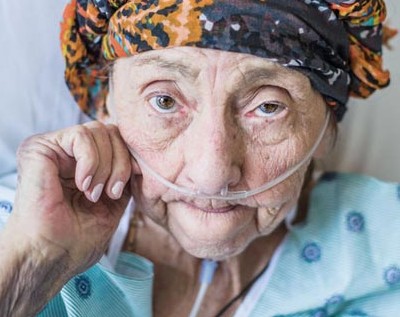By Joseph Shega, MD, Chief Medical Officer, VITAS Healthcare
Virtual reality and augmented reality (VR/AR) technology are powerful tools with great potential for shaping a patient’s experience near the end of life. Whether the patient seeks relief from pain, anxiety or other symptoms, or wishes to visit a long-sought destination or familiar locale, VR/AR technology can deliver surprising results at a relatively low cost and with little training required for caregivers.
In early 2019, AT&T and VITAS Healthcare launched a study in two U.S. markets to determine how VR/AR technology and 5G networking could work together to improve a hospice patient’s experience.
3 Benefits of Virtual Reality for Hospice Patients
- Pain relief: Pain is one of the top concerns for hospice patients, their families and caregivers. VITAS recognizes that relieving patients’ pain is one of our foremost responsibilities when comforting patients near the end of life. A recent study found that VR significantly reduces pain in patients, particularly when that pain is severe. Of course, physical pain isn’t the only discomfort hospice patients fear, but additional research suggests VR is a promising treatment for anxiety and other psychological issues afflicting patients.
- The patient can “go” places: Near the end of life, a person may feel dismay over the things they’ve not yet done, the experiences they’ve not yet had or places they’ve not yet visited. With VR/AR technology, hospice patients get a chance to visit a far-away place, perform a wish-list feat such as cliff diving, or enjoy a front-row seat to a loved one’s special event. While VITAS prides itself for bringing improbable experiences to patients wherever they call home, VR expands the possibilities even further.
- Help the patient feel connected: As a person’s physical ability diminishes, they may feel a growing sense of isolation. VR technology makes it possible to bring a hospice patient out of bed and into situations where they feel more connected with the world and the people in it. For instance, VR allows VITAS to fully honor our veteran patients, including those who are unable to physically attend the ceremonies and trips we’ve planned. VR headsets can be configured to transmit the same imagery between two viewers, enabling shared experiences between a patient and their loved one, caregiver or another party.
Virtual Reality: A Promising Alternative Therapy
For now, VITAS is testing VR/AR technology in two areas of California. As VR therapy shows continued promise as a treatment to reduce pain, anxiety and other symptoms, and as a tool to help patients have meaningful experiences and feel better connected with their world, VITAS intends to bring the technology to our patients and caregivers nationwide.


